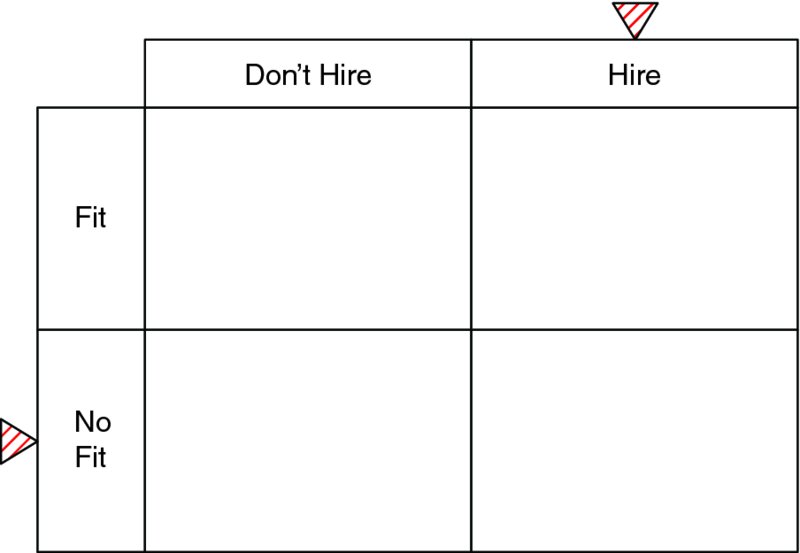3The First Principle of Effective Interviewing—Say No
So we’ve determined that we have to hire, after figuring out ways to prioritize work among remaining staff. And we’ve committed to setting a high bar. As we move to the interviewing phase of the hiring process, our guiding principle is simple: Look for reasons to say no.
The best way to demonstrate the rationale for this is by using a matrix that we popularized at the Manager Tools Effective Hiring Manager Conferences (Figure 3.1). We conduct these publicly all over the United States and overseas, and privately for clients as well.

Figure 3.1 Hiring Matrix
The matrix is a classic 2x2, showing the choices we have in interviewing and the possible outcomes. Our decisions are shown as two columns—either we hire, the rightmost column, or we don’t—the left column. The outcomes are shown as rows. A good fit—someone who turns out to be a good hire once he’s on board—is the top row. And a bad fit—someone who turns out poorly—in the bottom row.
The first lesson in the matrix is a simple one: it’s not necessarily true that someone is a fit just because we hire her. We only know whether someone is a good hire after she has been performing in the role. Most managers mistakenly conflate “saying yes” with a good fit: “If I like him, then he’s right.” But that’s not always true.
This leads us to important hiring guidance: effective ...
Get The Effective Hiring Manager now with the O’Reilly learning platform.
O’Reilly members experience books, live events, courses curated by job role, and more from O’Reilly and nearly 200 top publishers.

